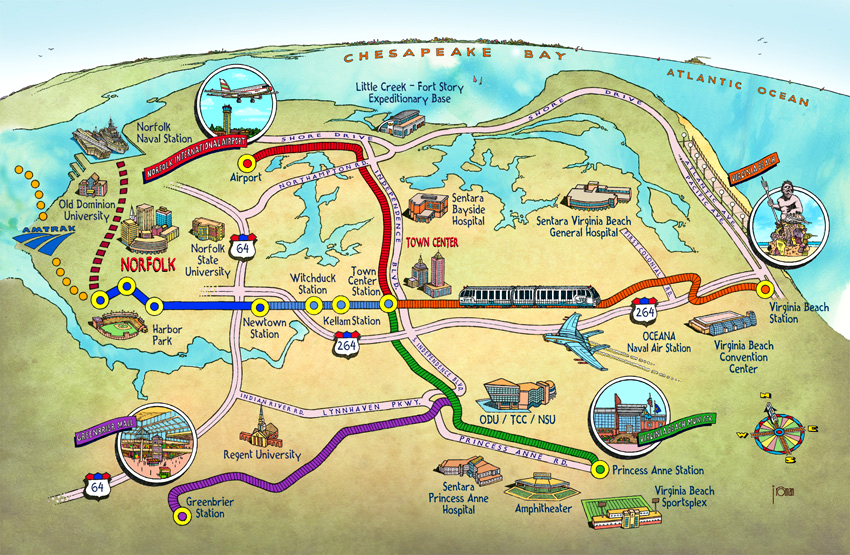

They included the addition of a parallel two-lane tube and a four-lane bridge, re-decking of the existing bridge and upgrading the interchanges. The money was used for bridge and tunnel renovations. The Downtown Tunnel and Berkley Bridge were added as part of I-264 in 1978 after Virginia received federal interstate funding. I-264 was built in 1968, but didn’t include the bridge/tunnel complex or the Route 44 Virginia Beach-Norfolk Expressway. It crosses the Elizabeth River, South Branch, via the Downtown Tunnel and the East Branch via the Berkley Bridge. Interstate 264 is an east-west highway, stretching 26 miles through Chesapeake, Portsmouth, Norfolk and Virginia Beach. It crosses the Allegheny Mountains, the Shenandoah Valley and the central Piedmont. Interstate 64 stretches nearly 300 miles from West Virginia to Hampton Roads. The ferry is wheelchair accessible and allows boarding passengers to walk on with their bicycles.Īmtrak provides passenger rail service to the cities of Norfolk and Newport News. Schedules are subject to change based on operating situations (weather, mechanical problems, etc.). Ferries operate every 30 minutes with 15-minute service during the summer at peak times on weekends. They’re fast, economical and offer a unique view of the river and the waterfront. They travel between North Landing and High Street in Portsmouth and the Waterside festival marketplace in downtown Norfolk. Hampton Roads Transit operates three 150-passenger paddlewheel ferries on the Elizabeth River between Norfolk and Portsmouth. There are four park-and-ride lots where parking is always free. Eleven stations provide access to dining, shopping and entertainment as well as the Norfolk State University and Tidewater Community College (Norfolk) campuses. It extends 7.4 miles from the Eastern Virginia Medical Center complex east through downtown Norfolk and adjacent to I-264 to Newtown Road. The Tide, Virginia’s first light rail system, opened for service in Norfolk on August 19, 2011.

Hampton Roads Transit serves the cities of Chesapeake, Hampton, Newport News, Norfolk, Portsmouth and Virginia Beach. Hampton Roads Executive Airport (PVG) serves smaller aircraft, such as business charters or private planes. The line sits out-of-service and derelict today, except for a small portion of the right-of-way within Virginia Beanch on its eastern end, which serves as part of the South Hampton Rail-trail system.Norfolk International Airport (ORF) and Newport News/Williamsburg International Airport (PHF) handle flights to and from US cities, and many international destinations. The line also served nearby Oceana Naval Air Station via a spur line.Īround 2008, the line was purchased from NS by the city of Virginia Beach in hopes of extending a local light rail line, the Tide, into their city limits. In 1900, the line was merged into the Norfolk and Southern Railroad, itself merged into Southern Railway in 1974, and finally came under the ownership of the Norfolk Southern Railway in 1982. In 1898, the line was converted to standard guage, and the branch to Munden Point was built. A narrow-guage operation, it struggled nearly immediately, reorganizing as the Norfolk and Virginia Beach Railroad in 1887. This abandoned railway line started out as the Norfolk, Virginia Beach Railroad and Improvement Company in 1883, connecting Norfolk with Virginia Beach. VA | N&S, N&VB, NS, NVBR&IC, SR Note: This line is not abandoned, but owned by the city of Virginia Beach with pending plans for a light rail line.


 0 kommentar(er)
0 kommentar(er)
